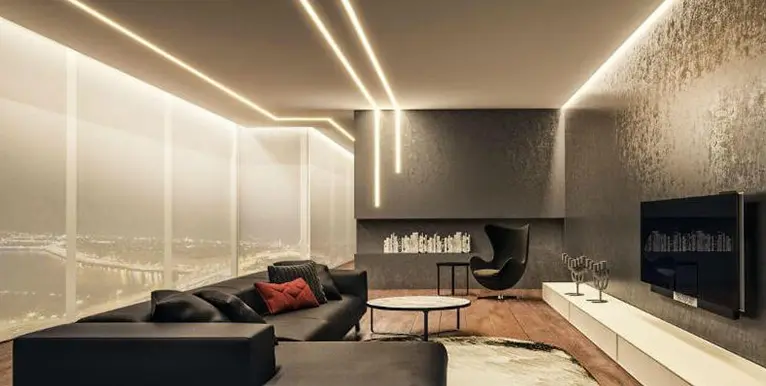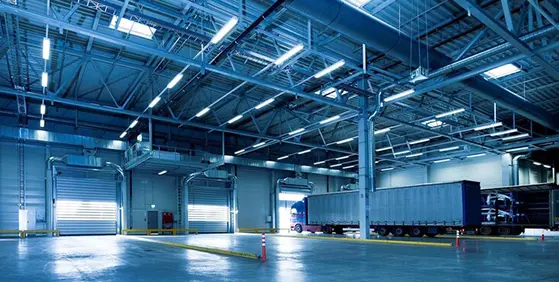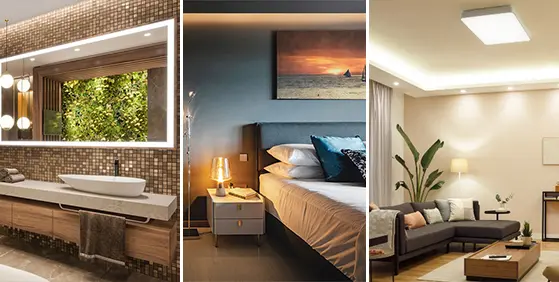While we all moan about “health and safety gone mad”, there are times when it’s worth paying attention to it, and where water and electricity come together is definitely one of those times. IP ratings are all about keeping the electricity in your home lighting separate from any water it may come into contact with. Read on to understand how and why LED lighting is rated to protect you, your home and your family from accidents – and stay safe.
What does IP stand for?
IP stands for “Ingress Protection” and is used as a safety standard for any enclosure that contains electrical equipment. IP ratings are defined by the international standard EN 60529, in the UK by British Standard BS EN 60529:1992.
What does that mean?
Ingress simply means “to get in”, so an IP rating is a measurement of how good the enclosure is at stopping things from getting into it and damaging the electrical equipment inside. And by “things” we mean water, dust or any other contaminant that could damage whatever electrical device or equipment is being protected inside the enclosure, but it also means fingers, particularly small curious children’s fingers.
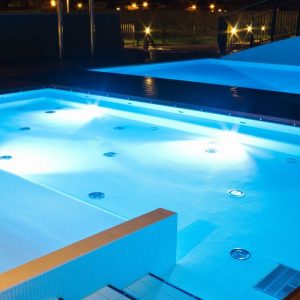
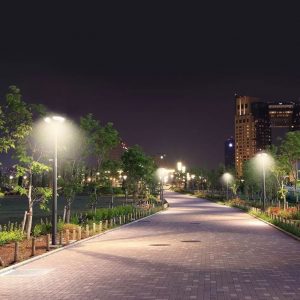
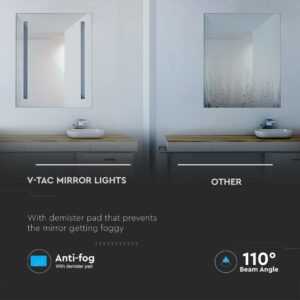
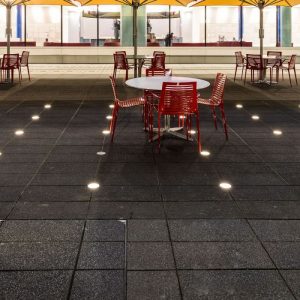
What is an IP rating?
IP ratings consist of two digits;
- The first tells you the level of protection your enclosure has against solids like dust and dirt or from tools or fingers.
- The second digit tells you the level of protection from liquids in all their forms, so includes water as a liquid such as rain or splashing in a bathroom, or in the form of steam.
Protection levels are from zero to six for solids and from zero to eight for liquids, so an IP65 rating means the enclosure has a top level of six protection from solids and a five out of eight level for liquids.
Why does lighting need an IP rating?
A lightbulb is an enclosure. Older types of lightbulbs are sealed glass enclosures with a tungsten filament surrounded by argon, an inert gas. Electricity passes through the tungsten filament causing it to emit light. In fluorescent bulbs including CFLs, the filament is replaced with mercury vapour which emits light more efficiently than tungsten. LEDs replace the tungsten or mercury with a light-emitting diode (LED) which is a type of semiconductor that is 90% more efficient at converting electricity to light than older lightbulb types.
An LED still needs to be in an enclosure of some type to protect the semiconductor with electricity passing through it from the environment and from elements like water and dust.
How to choose the right IP rating for LED lights Indoors and Outdoors?
What IP Rating Will You Need for Indoor Lights?
When it comes to IP rating for Indoor Lighting, this depends entirely on which room we’re talking about. For most rooms the standard IP20 rating or upwards is fine. It means that it’s sealed enough to stop physical things like children’s fingers into it but doesn’t require any protection from water.
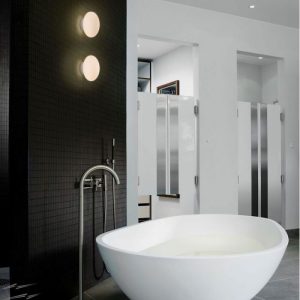
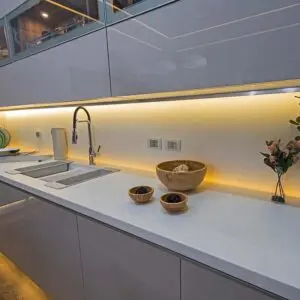
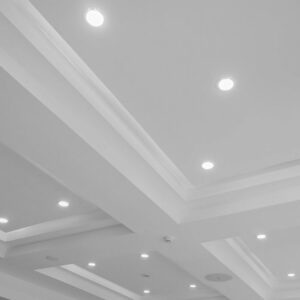
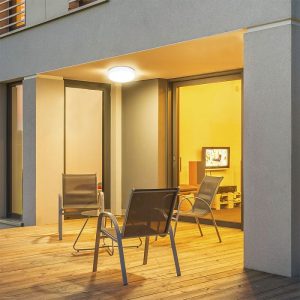
Bathroom and kitchen lighting both need to be checked for the correct IP-rated lighting, regardless of type. Bathroom safety standards are conveniently divided into zones for the purpose of identifying the required IP rating:
- Zone 0: Inside the bath or shower itself. Any fitting used in this zone must be a maximum of 12v and rated at least IP67 – total immersion proof
- Zone 1: The area above the bath or shower, up to a height of 2.25m. A minimum rating of IP45 is required but it is a rule of thumb that IP65 should be used
- Zone 2: Any area reaching from 0.6m outside the edge of the bath and up to 2.25m from the floor. Here an IP rating of at least IP44 is required. It’s also sensible to consider the area around a wash basin as being Zone 2 as well as a 60cm radius from any tap
There are no special IP requirements outside of the bathroom zones, but, in any area where water jets might be used, say for cleaning, then a minimum rating of IP65 must be used. This could be around the kitchen sink or if you went all out and installed that fountain in the hallway to wow your dinner guests.
What IP Rating Will You Need for Outdoor Lights?
For all outdoor lighting, it’s important to understand the difference between “waterproof” vs “water resistant”. Which one you use will depend on how protected the light fixture is from the elements. The commonly sold waterproof and water-resistant lights are IP65, IP67 & IP68. Check out our FAQs below to make sure you get the right light for the job.
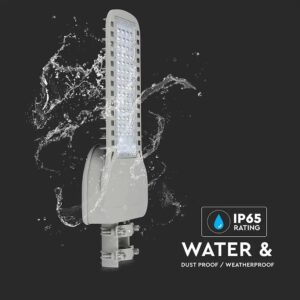
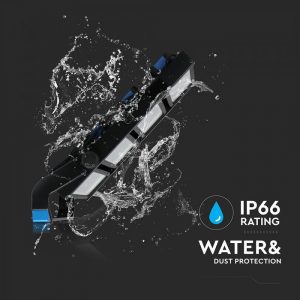
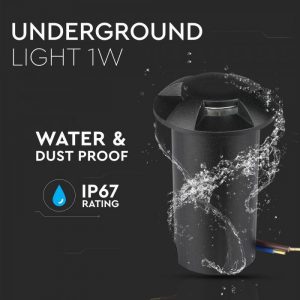
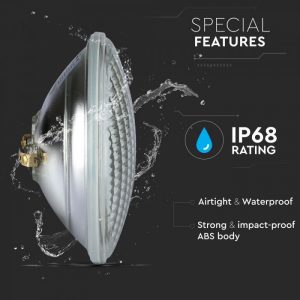
FAQs
How to find IP the ratings on LED lights?
Lighting does not usually have an IP rating printed on the bulb itself. This is because bulbs are often fitted inside another enclosure, which would obviously change the rating for the unit as a whole.
On our website, look for the “Protection Grade” listing under Additional Information. If you need a particular IP-rated LED bulb, you can put the relevant rating, IP65 etc, into our search bar at the top of any page and that will give you a list of all LED types with that rating.
What is the difference between IP65, IP67 & IP68?
The differences between these commonly sold lighting types are subtle but important.
- IP65: Water resistant. “Protected against water jets from any angle”. Do not submerge IP65 LED lights as they are not waterproof
- IP67: Water resistant plus. “Protected against the events of temporary submersion (10 minutes)”. Do not submerge IP65 LED lights beyond this time as they are not waterproof
- IP68: Waterproof. “Protected against the events of permanent submersion up to 3 meters”
How to Choose the Waterproof IP Rating of the Led Light Strip?
Most LED strip lighting is rated to IP20 so is fine to use indoors, away from water or where water jets might splash or be used for cleaning. Some short, low-profile, IP67-rated LED modules are available and are usually used in outdoor signage. Check them out here as the more innovative lighting designers often turn to industrial products to create something special.
Whatever your lighting needs, contact us and we’ll be happy to answer your technical questions about IP ratings, Lumens, Lux or Kelvin and make sure you get the safe, LED solution you need for your project.


